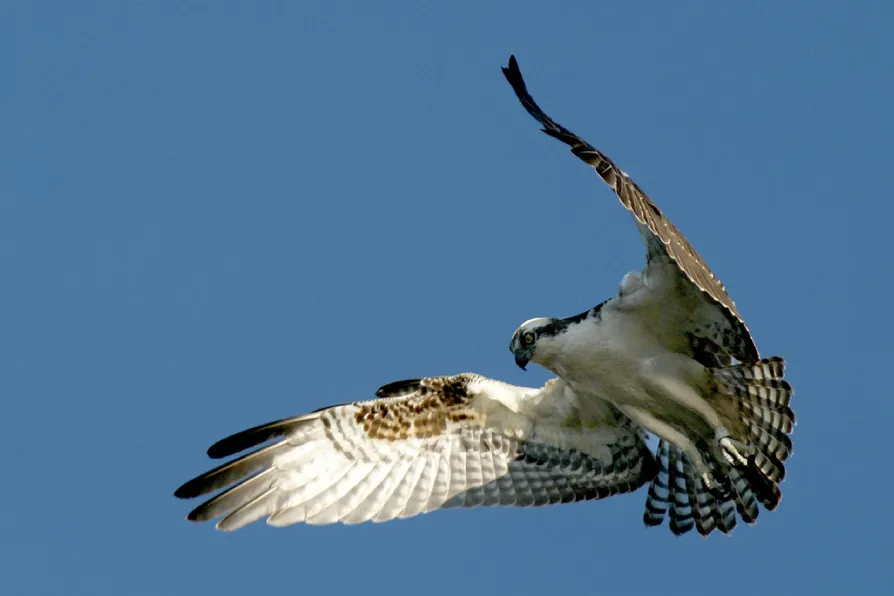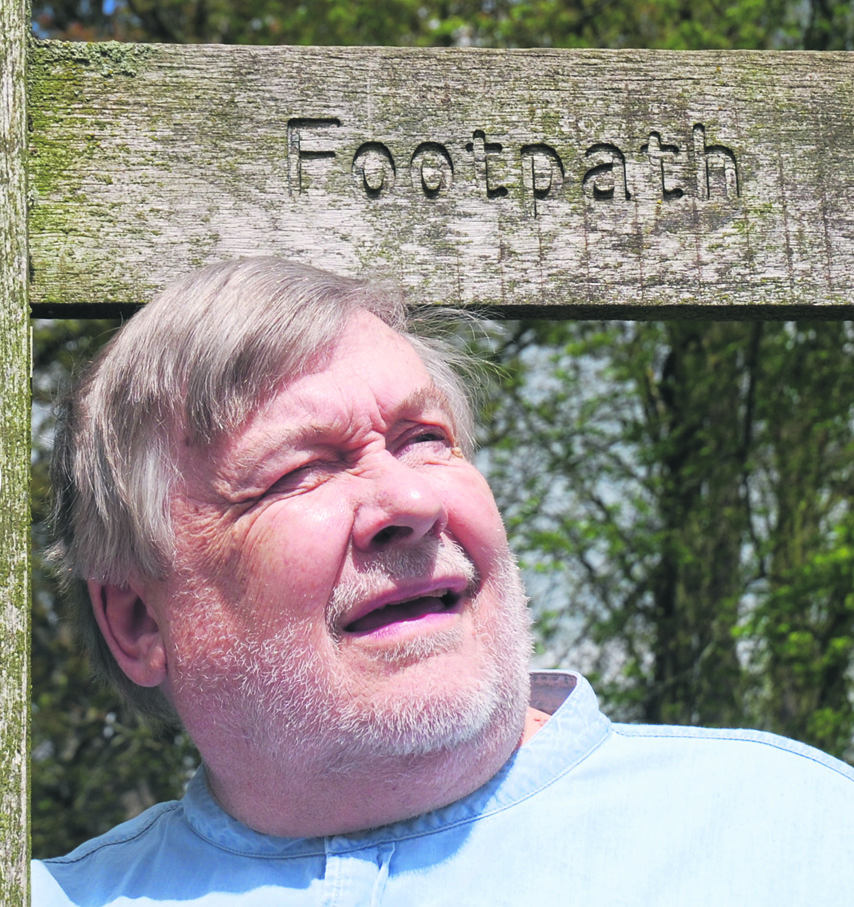The electorate see no evidence of the government’s promises of change, and the good jobs and decent pay that people are crying out for. Bold action is needed right now, warns SHARON GRAHAM

 An osprey hunting for prey
An osprey hunting for prey
THEY looked for all the world like four fluffy Spitting Image puppets of our esteemed Prime Minister. The same white tousled uncombed hair atop a pair of sharp eyes and a cruel mouth — or in this case sharp, hooked beak.
These just hatched chicks were getting more oohs and aahs than our idiot Prime Minister gets except from female Tory-thinking, promotion-seeking admirers at an illegal Downing Street party.
These chicks were, in fact, the first ospreys (Pandion haliaetus) to be born on England’s south coast for two centuries. The four chicks had hatched from eggs brought to their Poole harbour nest from sustainable nests further north.
The introduction of those eggs is part of a project which started in 2017 that has involved the translocation of 60 juvenile ospreys from Scottish nests into the Poole harbour area.
This process aims to create a bond between the young ospreys and their new local area, before they leave on their first dangerous migration, usually to west Africa.
This bond draws the ospreys back to Poole harbour on their return to Britain, after at least two years maturing in their wintering grounds, when they will identify suitable nesting sites.
This translocation, we hope, will lay the foundations for their return as a breeding bird to the south coast, 180 years on from their local extinction.
The birds are the focus of conservation efforts after becoming extinct due to habitat loss and shooting from gamekeepers protecting both game bird shoots but mainly private trout and salmon sport-fishing waters.
Not everyone welcomes the osprey’s recovery. Only last year at the Brenig Osprey Project in Wales an osprey nest was cut down by vandals with chainsaws.
A pair of ospreys had established a nest and laid their first egg the day before vandals cut down the structure under the cover of darkness.
The vandals have not been identified but the presence of a commercial trout-fishing business nearby must be a clue to why the nest was so savagely attacked.
The osprey, also called sea hawk, river hawk or fish hawk, is a diurnal, fish-eating bird of prey. Diurnality is a form of plant and animal behaviour characterised by activity during daytime, with a period of sleeping or other inactivity at night. Most of us humans are diurnal.
The osprey is a large raptor reaching more than 60cm (2ft) in length and 180cm (6ft) across the wings. It is brown on the upper parts and predominantly greyish on the head and under parts.
The birds of prey were once common across western Europe, but due to persecution by humans as well as habitat loss, they became locally extinct in the early 1800s.
Volunteers have been working to reintroduce them to southern England by relocating adult birds from Scotland where there are hundreds of ospreys.
There is also a successful breeding population at Rutland Water in the Midlands, after a translocation programme that began in 1996.
Poole harbour was chosen for the southern coast project because it has an abundance of fish for the birds to feed on.
Ospreys from other parts of Britain have been known to pass through the harbour on their way to and from Europe on their migratory route to Africa, and they stop to hunt for grey mullet and flounder in the harbour’s large shallow channels and bays.
This feeding builds up the birds’ energy for their long and arduous flight to Africa.
The parents of the new chicks made this flight to west Africa last autumn. The passage to Africa is fraught with danger, including adverse weather conditions and illegal hunting. Both birds arrived back at Poole at the beginning of this spring.
Let us hope the vandals and their chainsaws don’t come after these latest birds of prey living on our south coast.
Now another bit of really good news of the reintroduction of a very threatened mammal.
The red squirrel (Sciurus vulgaris) used to be our only native squirrel but the introduction of the American grey squirrel by some aristocrats to decorate their woodland estates gradually squeezed out our native red. The greys also carry a squirrel pox. This is harmless to themselves but deadly to our native reds.[[{"fid":"40771","view_mode":"inlinefull","fields":{"format":"inlinefull","field_file_image_alt_text[und][0][value]":false},"type":"media","field_deltas":{"1":{"format":"inlinefull","field_file_image_alt_text[und][0][value]":false}},"link_text":null,"attributes":{"height":"360","width":"640","class":"media-element file-inlinefull","data-delta":"1"}}]]
A group of caravan holiday parks in Norfolk is trying hard to reintroduce our native red squirrel. They do it by establishing large areas of suitable woodland behind squirrel-proof fences. They kill the greys within these huge caged areas and encourage reds to make it their home.
One such park is at Kelling Heath, and since the project started in 1990 they have bred no fewer than 34 red squirrel kittens — as young squirrels are called.
Kelling Heath Holiday Park is one part of the East Anglian Red Squirrel Society. There are now around 15 enclosures in Norfolk and Suffolk taking part in the breeding programme.
This year they have had one litter of an amazing four kittens. The kittens, yet to be named, were born to parents Iggy and Evie and are a welcome addition to the holiday park’s historic conservation efforts.
Red squirrels usually give birth to one or two kittens and triplets are not unknown but four kittens are very unusual indeed.
With the addition of this new litter, Kelling have now successfully bred 38 red squirrel kittens since joining the national conservation programme in 1999 as part of a scheme for captive breeding set up to protect this endangered native species.
David Martin, countryside manager at the park, told us: “We are overjoyed that Iggy and Evie have had a successful birth. A litter of four is incredibly rare for us and it is a privilege to watch them thrive.
“These kittens are the first at the park since 2019, and we’re thrilled that our new breeding pair, who only came to us in October of last year, have settled in well.”
Currently estimated to be around a dozen weeks old, having been born in March, the newest additions will now spend their time outside the nest box getting to grips with their new home.
The kittens will stay at Kelling Heath or when ready, be released to a nationwide conservation partner to help boost native populations across Britain.
Red squirrels are an essential part of the regeneration of pine woods and it is hopeful that Kelling Heath’s kittens will one day move on to another breeding project in a forested location.
It was in October last year (2021) that Iggy, Knot and Evie, all two-year-old captive-bred red squirrels, arrived at Kelling Heath from Pensthorpe Natural Park in Norfolk.
Knot is a female, who for the time being will be living in her own enclosure, and Iggy is male, living in another enclosure with female Evie.
Last year started with some sad news. Kelling’s old male red squirrel passed away toward the end of January. In squirrel years he was very old. This may have been the reason for the Kelling squirrels’ failure to breed successfully last year.
As well as ospreys and red squirrels all over Britain, volunteers are working hard to reintroduce many other once locally extinct native animals. I’m sure they would welcome your support.



















